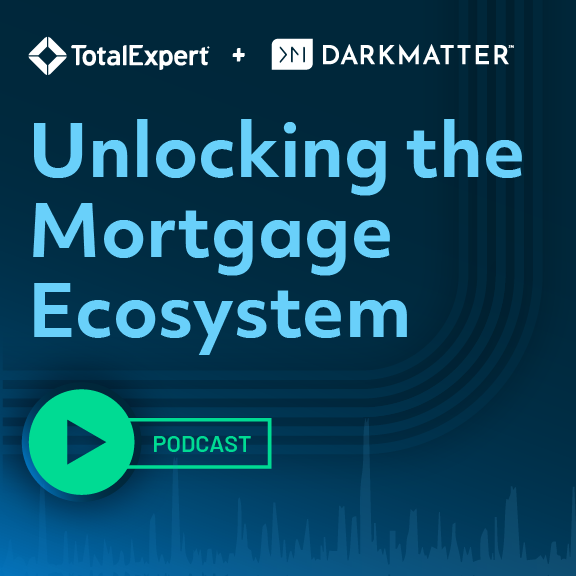The mortgage industry has always prized the hustle. The most successful loan officers (LOs) are those with the motivation and self-direction to relentlessly chase leads, manage relationships, and close deals—and the ingenuity to develop their own best practices. Those qualities remain essential. But in today’s market, mortgage lenders can’t afford to treat their LOs as lone-wolf salespeople. That conventional model doesn’t just limit growth—it actively undermines it.
Fragmentation is a real problem for lenders, and the lone wolf model isn’t making it any easier. Individual excellence isn’t enough when data is disconnected, messaging is inconsistent, and decisions get made in silos. Meanwhile, LOs can (understandably) over-rotate toward short-term wins, while the bigger opportunities—building long-term relationships and sustainable growth—get lost in the noise.
What lenders need now is alignment, visibility, and unification. They need a way to turn one-time borrowers into lifelong customers. And that starts by getting everyone on the same page—and the same platform.
Why lone-wolf lending fails
When LOs are left to figure things out on their own, the result is predictable: they optimize for what they can control. They chase leads. They close loans. And they do it all with whatever tools and processes they’re most comfortable with.
This approach is serviceable for the individual LO. But when you scale that to dozens or hundreds of LOs—each working in isolation—issues quickly emerge:
- No shared customer insight. Everyone’s working from their own spreadsheets, contact lists, or partial CRM views.
- No coordinated engagement. Borrowers get wildly different experiences depending on which LO they’re working with.
- No long-term strategy. Because LOs are buried in day-to-day deals, there’s no time—or incentive—to nurture relationships that might pay off months or years down the road.
The result? Short-term gains that cause long-term stagnation. Without a coordinated strategy, you end up with isolated efforts that fail to make a lasting impact. And the moment the market shifts, lenders are left scrambling. Those once-shiny wins quickly become embarrassing monuments to short-sighted tactics.
A seamless platform provides limitless visibility
So, what’s the answer? The most important change is giving your team a common foundation to work from—and that comes down to choosing the right technology. Centralizing customer data and engagement on a single platform can change how your business functions at all levels:
It unifies the customer experience. Everyone’s drawing from the same source of truth, so your borrowers get a consistent message and a more personal, relevant journey—no matter which LO they’re working with.
- It gives LOs insight they can actually use. A centralized view reveals not just who’s ready to do business today, but who’s showing long-term intent signals—credit checks, property listings, life events—and who’s worth nurturing over time.
- It boosts efficiency and productivity. Automating outreach, follow-up, and lead prioritization frees LOs to focus on what they do best: building trust, closing deals, and deepening relationships.
- It creates a real growth engine. With shared data and a scalable engagement strategy, you can stop scrambling and start building a system that can grow predictably and sustainably, even when the market gets choppy.
LO adoption: where most tech implementations go wrong
Of course, tech on its own won’t fix anything. If LOs don’t use the platform, you’re back to square one.
This is a big hurdle in the lending world, where there’s very real inertia to change. Most LOs aren’t eager to change what’s already working for them. If a new tool or platform just feels like it will add extra work, they’ll ignore it—leaving your new solution to collect dust and your investment or time and money largely wasted.
This is why solving the adoption problem needs to be part of your strategy from the start. And while it’s a serious issue, there are three key steps to mitigate it:
- Keep it simple. Give your LOs tools and dashboards that surface what matters most—who to call, when to follow up, what’s driving intent—without forcing them to dig or overwhelming them with features and functions they won’t ever use.
- Show, don’t tell. Help them connect the dots between using the platform and hitting their numbers. If it helps them close faster, follow up smarter, or get more repeat business, they’ll at least be willing to try. As the saying goes: “You can lead a horse to water…”
- Support them like it matters. Training should be hands-on and tailored, not a one-time webinar. This is just as much your vendor’s responsibility as it is yours. Make sure you vet any vendor’s ability to commit to successful implementation.
The extent to which you follow these three steps will go a long way in determining whether you see ROI on your tech investment.
You can’t scale in infinite directions
Every lending organization has LOs who go above and beyond; LOs who lag behind, and LOs who simply meet expectations. And lone wolves permeate all three groups; following their own roadmap, chasing any opportunity they find, and hindering the organization’s larger growth strategy. That’s why organizations structured this way find it impossible to scale.
Now, imagine if you could have tech that elevates every LO to the same high-performing level. By aligning your entire sales organization on a single platform that helps them work more efficiently, your good LOs will continue to produce, but now your struggling and middle-of-the-road LOs can level up—allowing leaders and platform administrators to spend less time reigning in lone wolves and more time supporting the pack.
Wolves hunt better in packs
LOs will always be at the front line of your lending operation. But treating them like individual agents instead of coordinated players in a unified strategy is holding your business back.
By moving to a shared platform and getting serious about adoption, you set your organization up for something far more valuable than short-term wins. You build a system that gets smarter over time and nurtures every relationship—not just the ones that close quickly. You also strengthen the resilience of your business, setting it up for growth no matter how the market moves or how your organization evolves.


